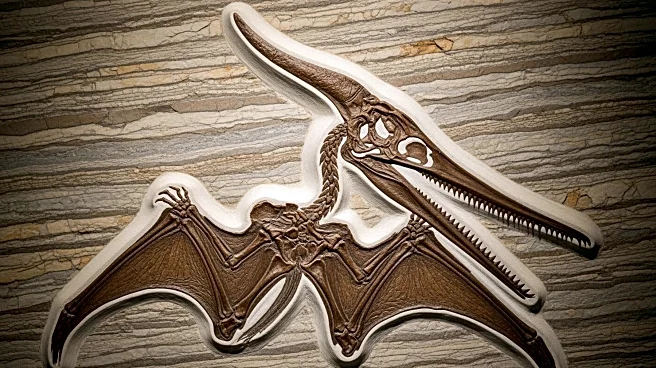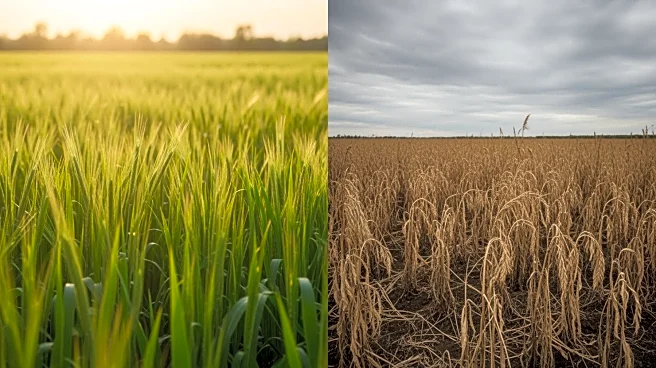What's Happening?
A new filter-feeding pterosaur, Bakiribu waridza, has been identified from a regurgitalite fossil assemblage in the Santana Group, Brazil. The discovery provides insights into the evolution of ctenochasmatids,
a group of pterosaurs known for their unique dentition. Bakiribu exhibits intermediate features between older and younger ctenochasmatids, suggesting an evolutionary transition in tooth structure and feeding capabilities. The fossil assemblage, interpreted as a regurgitated mass, includes densely packed pterosaur bones and fish, indicating predation by a large piscivorous predator.
Why It's Important?
The discovery of Bakiribu waridza enhances understanding of pterosaur evolution and feeding strategies. It highlights the diversity and adaptability of ctenochasmatids, contributing to knowledge of prehistoric ecosystems. The regurgitalite interpretation provides valuable taphonomic context, offering insights into predator-prey interactions and the dietary behavior of ancient species. This research underscores the importance of fossil studies in reconstructing evolutionary histories and ecological dynamics.
What's Next?
Further analysis of the fossil assemblage may reveal more about the predator responsible for the regurgitalite and its ecological role. Researchers may explore the presence of ctenochasmatids in other formations, expanding knowledge of their distribution and environmental preferences. Continued study of Bakiribu's dentition could provide deeper insights into the evolution of filter-feeding mechanisms in pterosaurs.
Beyond the Headlines
The discovery of Bakiribu waridza highlights the complexity of evolutionary processes and the role of environmental factors in shaping species adaptations. It emphasizes the significance of paleontological research in understanding biodiversity and the interconnectedness of ancient ecosystems.












